Restaurant Branding: A Guide for Success in 2025
Effective Restaurant Branding Strategies to Improve Your Business

Scroll to explore
Restaurant Branding Tips for 2025
Listen to an Audio Discussion of Restaurant Branding:
In the ever-evolving landscape of the restaurant industry, restaurant branding has emerged as a pivotal element of success.
Far from being just a marketing buzzword, effective branding in the restaurant world is a blend of art and strategy, a crucial component that sets a dining experience apart in a highly competitive market.
Here, we’ll discuss the significance of branding for restaurants, navigating through its evolving nature in the digital era and drawing insights from case studies of successful restaurant brands.
At its core, branding is the process of creating a unique identity and image for a product or service in the consumer’s mind.
For restaurants, this goes beyond just a catchy name or an eye-catching logo.
It encompasses the entire guest experience, from the ambiance and menu design to staff uniforms and restaurant marketing strategies.
Restaurant branding is about evoking emotions and creating connections, making a restaurant memorable and recognizable. It’s a narrative that tells the story of a restaurant, reflecting its values, cuisine, and culture.

The coming of the digital age has revolutionized restaurant branding. Social media platforms, online reviews, and digital/email marketing have become integral tools in shaping a restaurant’s image and reaching potential patrons.
This digital transformation has not only provided new avenues for branding but also intensified the need for an authentic and consistent brand presence across all channels.
The ability to adapt and thrive in this digital landscape is now a key factor of a restaurant’s branding success.
First, we will explore the building blocks of creating a strong and enduring restaurant brand.
Remember, effective branding strategies are not just about standing out in a crowded market. They are about crafting a unique dining narrative that resonates with guests and sustains business growth.
Building a Strong Restaurant Brand
Establishing a strong brand is akin to perfecting a signature dish. It requires a blend of creativity, understanding of your audience, and a dash of uniqueness.
Here are the foundational steps to carve out a distinctive brand identity and the essential elements that constitute a strong brand in the restaurant industry.
Identifying Your Unique Brand Identity
1. Mission, Vision, and Values
The cornerstone of your brand identity lies in defining your restaurant’s mission, vision, and values.
Your mission statement should encapsulate the essence of what your restaurant stands for, your culinary mission, and the experience you aim to offer.
The vision statement, on the other hand, is your restaurant’s road map, outlining the future you aspire to create.
Underlying both are your core values – these are the principles and beliefs that guide every aspect of your business, from menu creation to customer service.
Together, these elements not only differentiate your restaurant from competitors but also build a deeper connection with your guests.
2. Target Audience Analysis
Understanding who your guests are is key. Conducting a thorough analysis of your target audience helps tailor your branding to resonate with their preferences and needs.
This involves researching demographics, dining habits, preferences, and even lifestyle choices. Are your ideal patrons families, young professionals, or gourmet enthusiasts?
Each group has unique expectations and preferences that your branding should cater to.
The clearer your understanding of your audience, the more effectively you can tailor your brand’s voice, aesthetics, and overall dining experience to meet their expectations.
In restaurant branding, understanding and aligning with your guests’ sentiments and behaviors is crucial.
Bloom Intelligence emerges as a vital tool in this endeavor, offering restaurateurs a sophisticated way to gain in-depth insights into guest preferences and behavior patterns.
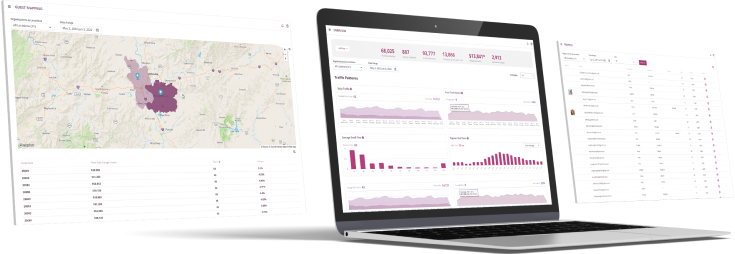
Harnessing Data for Deeper Insights
Bloom Intelligence combines guest data from many different sources to harvest valuable guest insights from multiple channels, such as WiFi, POS, Online ordering, reservations, social media, and more.
This includes understanding customer dwell times and visit frequency, which sheds light on the appeal of your restaurant’s brand, ambiance, and offerings.
Additionally, it provides insights into guest demographics such as age and gender, which are essential for tailoring your brand to your target audience.
Analyzing Sentiment for Brand Alignment
Beyond basic analytics, Bloom Intelligence offers customer sentiment analysis, a feature that reviews online feedback from multiple sites to provide restaurateurs with an understanding of customer sentiment trends.
This involves detecting overarching sentiments from guest reviews and swiftly addressing negative feedback to maintain a positive brand image.
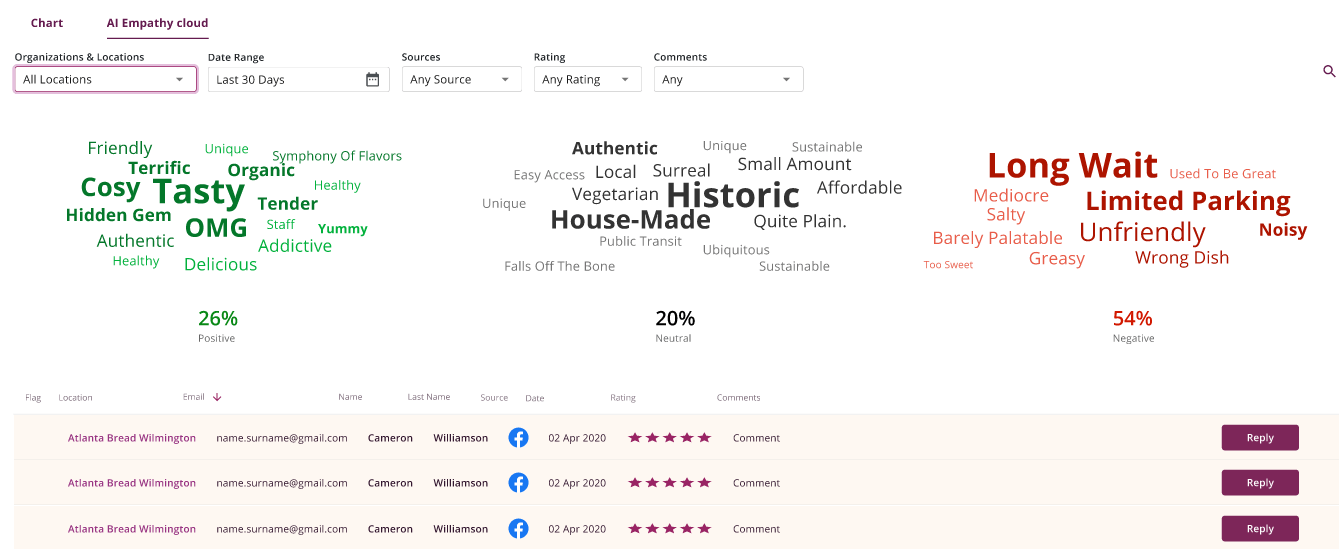
Personalizing The Guest Experience
The platform allows for the development of personalized marketing strategies based on the collected data. This includes creating targeted marketing campaigns that resonate with specific customer segments and designing customer loyalty programs that reward repeat visits, thus enhancing customer retention and reinforcing brand loyalty.
Bloom offers a comprehensive set of tools for restaurateurs to more effectively understand and cater to their guests.
By leveraging this power, restaurant owners can make informed decisions that align their brand and marketing strategies with customer expectations and preferences.
In the competitive restaurant industry, Bloom Intelligence empowers restaurateurs to harness the power of data-driven insights, keeping them a step ahead.
Elements of a Strong Brand
Logo and Design
The visual identity of your brand, encapsulated in your logo and design, is often the first point of interaction with potential customers.
It should be distinctive, memorable, and reflective of your restaurant’s personality. This extends beyond the logo to include the color scheme, typography, and overall design language used in your restaurant’s interiors, menus, and marketing materials.
A well-designed visual identity not only attracts attention but also aids in brand recall.
Tone of Voice and Messaging
The way your brand communicates is a crucial part of its personality. Your tone of voice should align with your brand’s personality – whether it’s friendly and casual or sophisticated and elegant.
This tone should be consistent across all platforms, from social media posts and advertising to the language used on menus and by staff.
Effective messaging conveys your brand’s story and values, engaging customers on a more personal level.
Brand Story and Personality
Every restaurant has a story – be it the inspiration behind its creation, the journey of the chef, or the philosophy behind its cuisine.
Your brand story is a powerful tool that adds depth to your brand and enables customers to form a personal connection with your restaurant.
This narrative should be authentic and compelling, reflecting the uniqueness of your restaurant.
Additionally, the personality of your brand – whether it’s adventurous, traditional, luxurious, or quirky – should shine through in every aspect of your restaurant, from the ambiance to the menu items offered.
By meticulously crafting these aspects of your restaurant brand, you set the stage for a memorable and distinctive presence.
The next step is to translate this strong brand foundation into effective strategies across various channels to engage and captivate your audience.

Implementing Your Restaurant Branding Strategy
Once a strong brand identity is established, the next crucial step is implementing this branding strategy both within and outside the restaurant.
This dual focus ensures a cohesive and authentic brand experience for every patron, whether they’re interacting with your staff, visiting your establishment, or encountering your brand online.
Internal Branding
1. Employee Training and Brand Advocacy
Your employees are the ambassadors of your brand, and their alignment with your brand’s vision and values is crucial.
Investing in comprehensive training ensures that every staff member, from the kitchen to the front desk, understands and embodies the brand. This training should cover not only the technical aspects of their roles but also the nuances of your brand’s tone, story, and customer interaction style.
Encouraging employees to become brand advocates amplifies your brand’s presence and authenticity, as they share their pride and passion for the restaurant in their interactions with guests as well as their personal networks.
2. Consistent Brand Experience Within the Establishment
Consistency is key in creating a memorable brand experience. Every element within your restaurant, from the decor and music to the menu design and plating, should reflect your brand identity.
This consistent brand experience helps in building customer loyalty and ensures that your brand’s story and ethos are communicated effectively.
Paying attention to details, such as the way staff interacts with guests, the presentation of food, and even the cleanliness of the establishment, reinforces your brand’s values and standards.
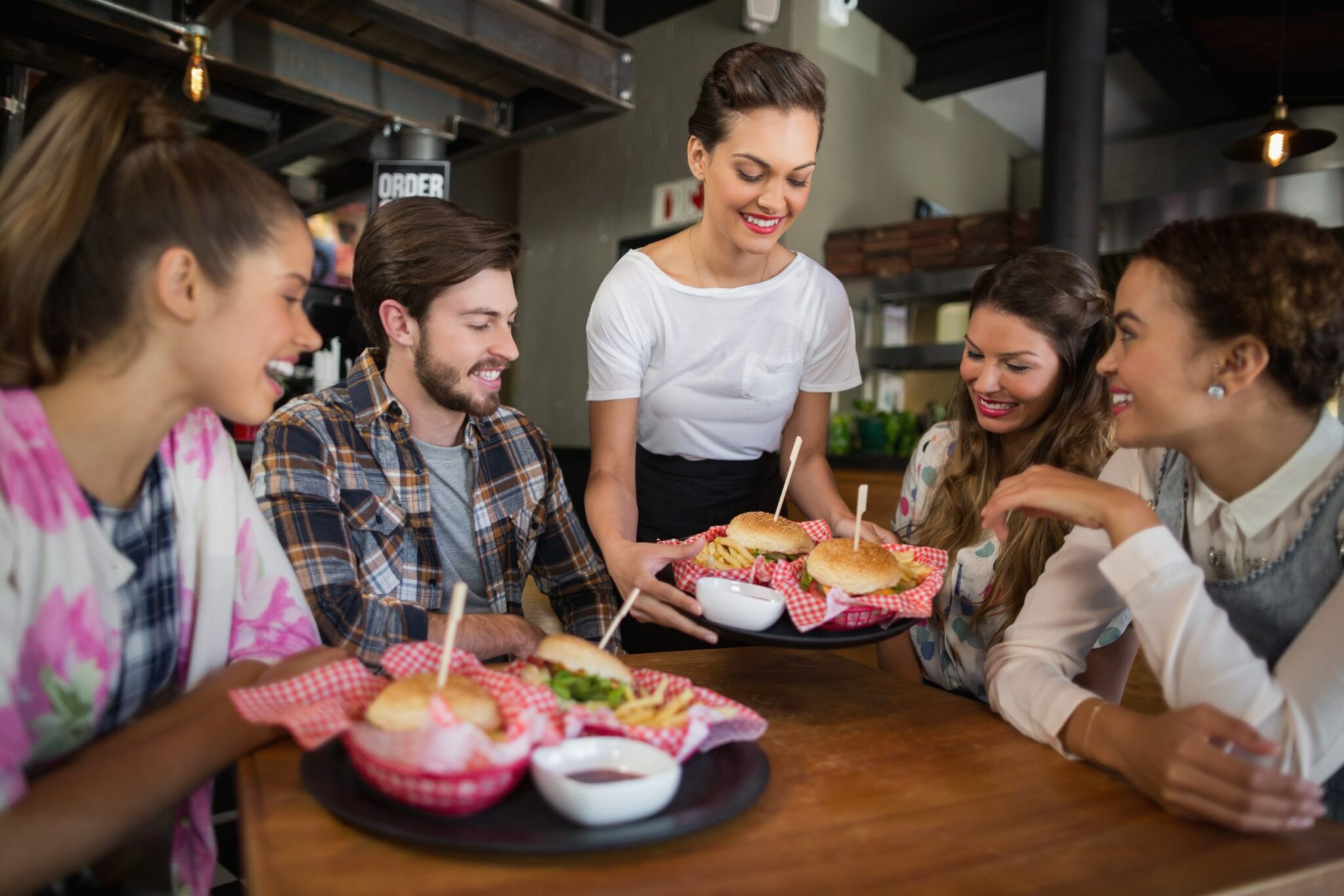
External Branding
1. Creating a Consistent Visual and Verbal Identity
In the digital age, your brand’s online presence is as important as its physical one. A consistent visual and verbal identity across all platforms – including your website, social media, marketing, and advertising – is essential.
This includes using a consistent color scheme, logo, typography, and imagery that align with your brand’s identity.
Similarly, the tone and style of your written content, whether in emails, blog posts, or ad copy, should be uniform and reflect your brand’s voice. Consistency in these elements helps in building a strong and recognizable brand identity.
2. Branding Through Customer Service and Experience
Exceptional customer service is a powerful branding tool. It’s not just about meeting expectations, but exceeding them, creating memorable experiences that guests want to share.
Personalizing guest interactions, responding promptly and effectively to feedback and reviews, and going above and beyond to meet guest needs can make your restaurant stand out.
Additionally, leveraging technology like online reservations, a user-friendly website, and a responsive social media presence can enhance the guest experience and reflect your brand’s commitment to quality and innovation.
Implementing your branding strategy both internally and externally requires attention to detail, consistency, and a deep understanding of your brand’s identity.
By focusing on these aspects, you create a cohesive, memorable brand experience that resonates with customers and sets your restaurant apart in the competitive culinary landscape.
The next section will explore how to leverage digital channels effectively to further enhance and communicate your brand’s identity.
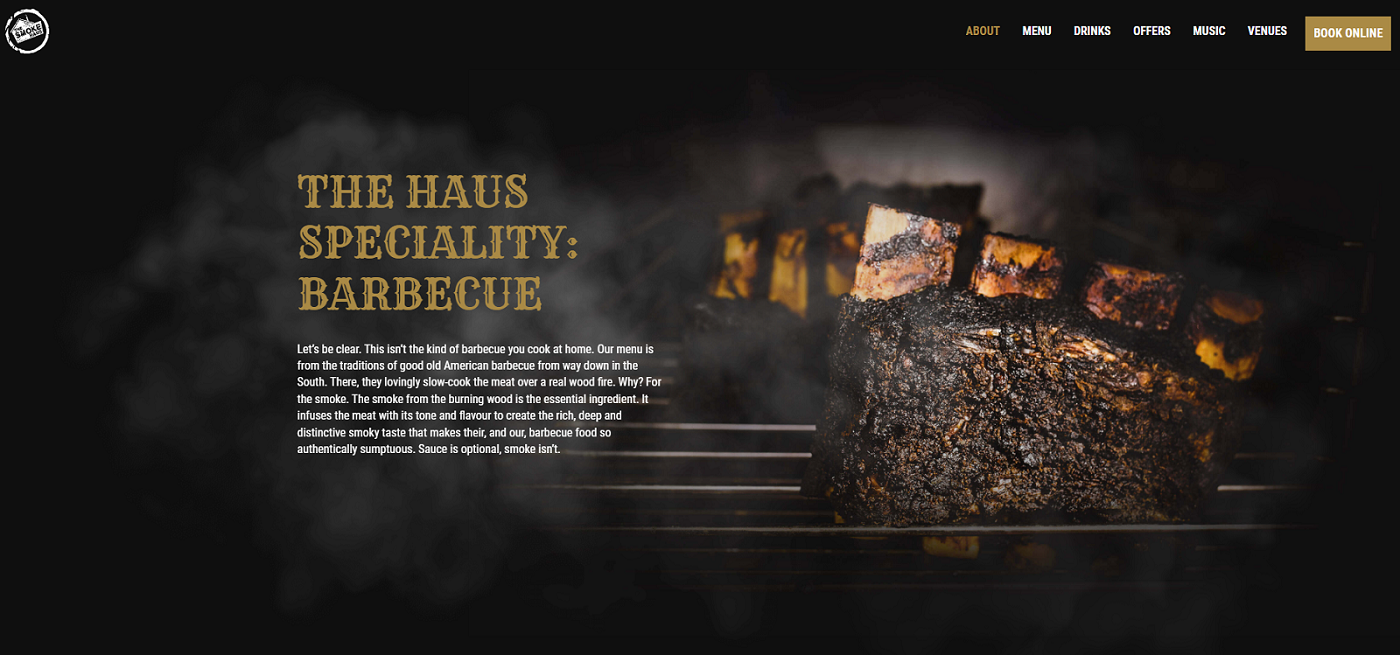
Leveraging Digital Channels for Branding
In the digital era, having a robust online presence is crucial for restaurant branding. Digital channels offer unparalleled opportunities to reach and engage with a wider audience, tell your brand’s story, and create a lasting impression.
This section explores how to effectively use digital channels like websites, social media, and email/SMS marketing to amplify your restaurant’s brand.
Website and Social Media
1. Consistent Brand Representation Online
Your website and social media profiles are often the first points of contact between your restaurant and potential customers.
It’s essential that these platforms consistently reflect your brand’s visual and verbal identity.
This includes using your brand’s color scheme, logo, and typography consistently across your website and social media profiles. The tone, style, and type of content shared should also align with your brand’s personality.
Regularly updating your website and social media with high-quality images, menus, and relevant information about your restaurant keeps your online presence fresh and engaging.
2. Engaging Content Strategies
Social media offers a dynamic platform to showcase your brand’s story and connect with your audience.
Develop a content strategy that resonates with your target audience and reflects your brand’s uniqueness. This could include behind-the-scenes glimpses of your kitchen, showcasing your staff, sharing customer testimonials, or highlighting special dishes.
Interactive content like polls, Q&A sessions, and contests can also increase engagement and brand visibility.
Regular, thoughtful posting helps maintain an active and engaging online presence, encouraging customers to interact with and share your content.
Email and SMS Marketing
1. Personalized Communication with Brand Voice
Restaurant email marketing and SMS marketing are powerful tools for personalized communication. Use these channels to extend your brand’s voice in a more direct and personal way.
Personalized emails and messages that reflect your brand’s tone and style can create a sense of connection with your audience.
This could be through personalized greetings, offering special deals, or sharing news and updates about your restaurant. The content should be relevant and valuable to your audience, encouraging them to visit your restaurant.
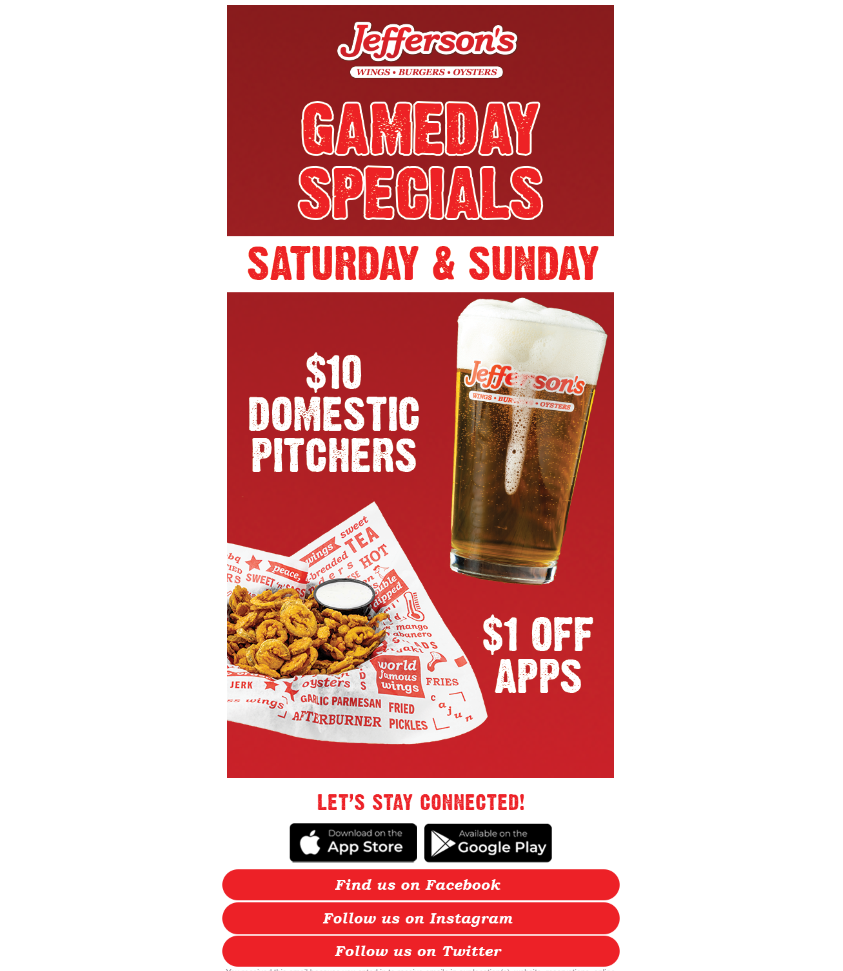
2. Strategies for Effective Email and SMS Campaigns
To maximize the impact of your email and SMS marketing, it’s important to have a strategic approach.
Segment your audience based on their preferences and behavior to send targeted messages. For example, customers who frequently order vegetarian dishes might appreciate updates about new plant-based menu items.
Timing is also crucial, sending messages at optimal times can increase the chances of them being read and acted upon.
Monitoring the performance of your campaigns through metrics like open rates and click-through rates can provide insights to continually refine your strategy.
Leveraging digital channels effectively is crucial for modern restaurant branding. It’s not just about having an online presence, it’s about using these platforms strategically to communicate your brand’s story, engage with your audience, and enhance your brand’s overall visibility and appeal.
Bloom Intelligence stands out as a tool that enables restaurateurs to automate their digital marketing efforts, particularly in email marketing, by leveraging guest behavior and demographic data. Utilizing
Bloom’s platform excels in gathering detailed data on guest behavior and demographics from most customer touch points, both online and at your locations.
By analyzing this data, you gain valuable insights into guest preferences, dining habits, and patterns. These insights become the foundation for highly personalized and targeted email marketing campaigns to bolster your brand recognition.
Enhancing Guest Experience and Brand Loyalty
By using Bloom Intelligence for automated, behavior-based email marketing, restaurants can significantly enhance the customer experience. Personalized emails make guests feel recognized and valued, which is crucial for building brand loyalty.
Moreover, this targeted approach can lead to better conversion rates as messages are tailored to meet the specific needs and preferences of each customer segment.
It also allows restaurants to measure the effectiveness of their campaigns through open rates, click-through rates, and subsequent dining behavior, providing a clear picture of return on investment.
Bloom Intelligence offers a sophisticated solution for automating digital marketing in the restaurant industry. By leveraging guest behavior and demographics, restaurateurs can create personalized, timely, and effective email marketing campaigns.
This not only streamlines the marketing process but also enhances the guest experience, fosters brand loyalty, and ultimately drives business growth.
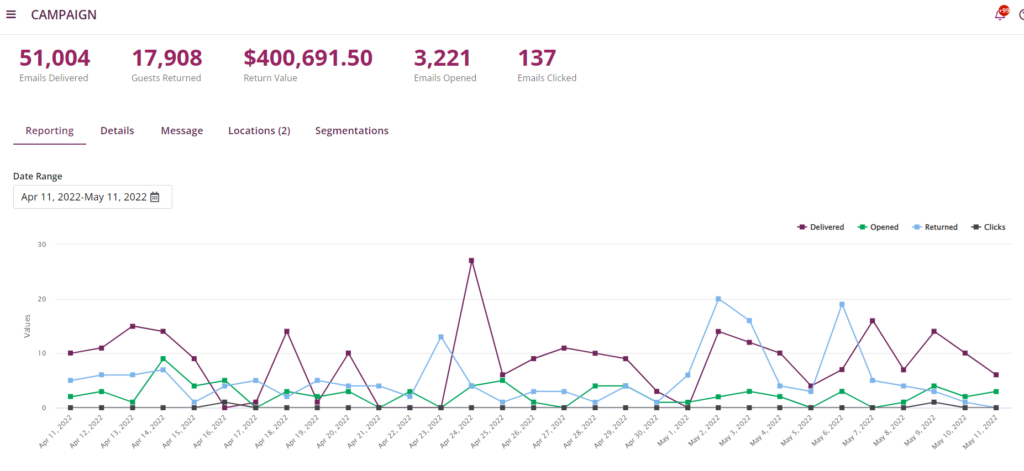
Measuring Brand Success
After investing time and resources into building and implementing a branding strategy, it’s essential to measure its effectiveness.
Here are the Key Performance Indicators (KPIs) to track, the tools and techniques for monitoring brand performance, and how to adapt and evolve your brand strategy based on these insights.
Key Performance Indicators (KPIs) for Branding
- Brand Awareness and Recognition – This involves measuring how well your target audience recognizes and recalls your brand. Surveys, social media mentions, and search volume data can provide insights into brand awareness.
- Guest Engagement – Engagement metrics include website traffic, social media interaction (likes, shares, comments), and time spent on your digital platforms. These indicators reflect how effectively your content and brand messaging resonate with your audience.
- Customer Loyalty and Retention – Repeat business and customer retention rates are critical indicators of brand success. Loyalty programs and customer feedback can offer valuable data on how your brand is perceived and the extent of customer loyalty.
- Sales and Revenue Trends – Ultimately, a successful branding strategy should translate into positive sales and revenue trends. Tracking changes in these areas can indicate the direct impact of your branding efforts.
Tools and Techniques for Tracking Brand Performance
In the pursuit of tracking brand performance, a variety of tools and techniques can be employed effectively.
Firstly, digital analytics tools play a pivotal role. Google Analytics, for instance, is instrumental in analyzing website traffic, helping understand visitor behavior and patterns.
Similarly, social media analytics are essential for tracking engagement and interactions on various platforms, providing insights into the effectiveness of content strategies.
Additionally, SEO tools are crucial for monitoring online visibility and search rankings, ensuring that your brand remains prominent in digital spaces.
Another key method is actively seeking guest feedback. This can be achieved through a range of mediums, including surveys, comment cards, and online reviews.
Such direct feedback from patrons serves as a valuable resource in understanding how your brand is perceived and highlights areas that may require improvement or enhancement.
Lastly, conducting competitive analysis is an integral part of brand performance tracking. By keeping an eye on competitors’ branding strategies and overall performance, you can glean valuable benchmarks.
This not only aids in understanding the market landscape but also helps in identifying unique opportunities for your brand to differentiate itself and stand out.
Together, these tools and techniques offer a comprehensive approach to understanding and improving your restaurant’s brand performance in a competitive industry.
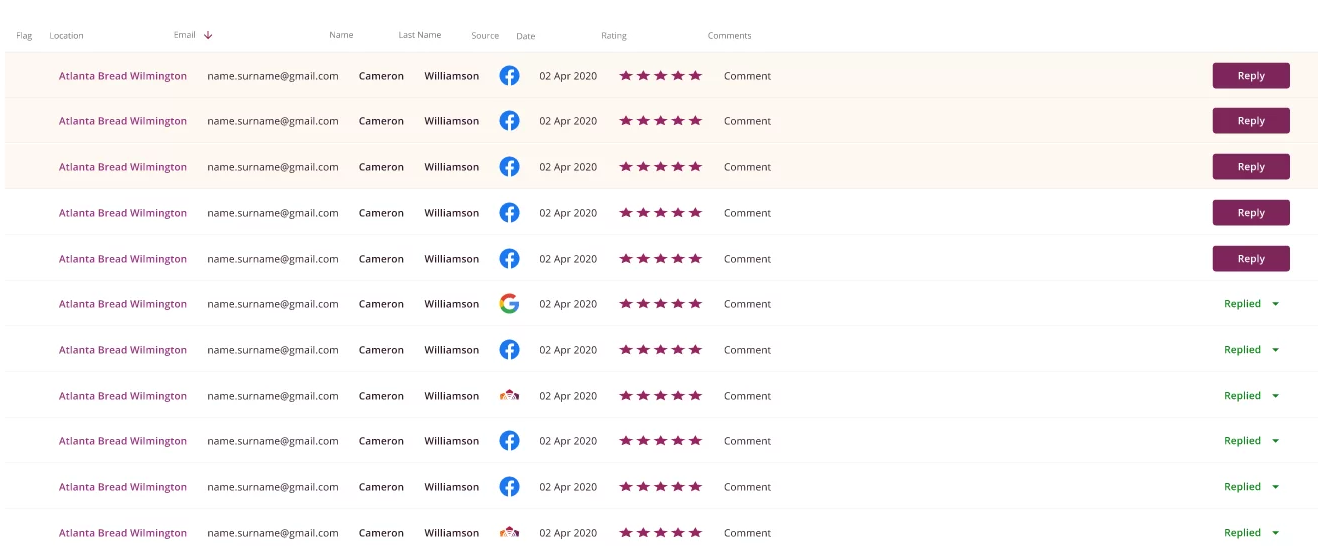
Adapting and Evolving Your Brand Strategy
Responding to Feedback and Trends
Regularly review the collected data and feedback to identify trends and areas for improvement. Being responsive to guest preferences and market changes is crucial.
Innovating and Staying Relevant
The restaurant industry is dynamic, and keeping your brand fresh and relevant is essential. This might involve updating marketing campaigns, revisiting your brand’s visual elements, or innovating the dining experience.
Continuous Learning and Improvement
Branding is an ongoing process. Stay informed about industry trends, customer behavior changes, and new marketing techniques.
Regularly revisiting and refining your brand strategy based on performance metrics ensures sustained success and relevance.
By effectively measuring and analyzing these aspects of brand performance, restaurant owners and marketers can gain valuable insights into the strengths and areas for growth of their branding strategies, allowing for informed decisions and continuous enhancement of the brand’s impact.
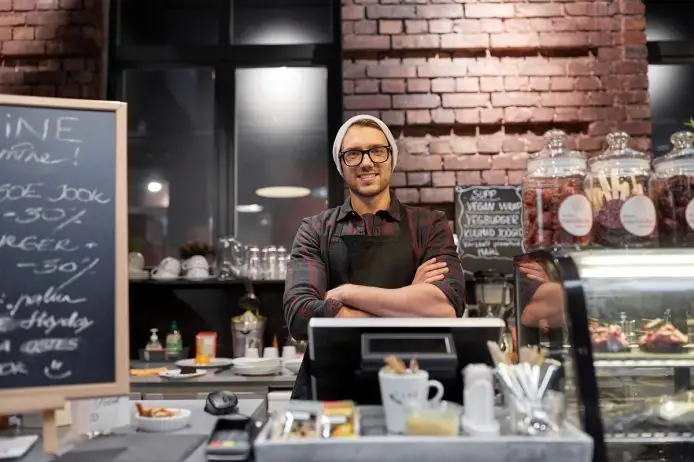
Challenges and Best Practices in Restaurant Branding
Branding in the restaurant industry is fraught with challenges, yet understanding and addressing these can lead to a more resilient and impactful brand.
Here, we’ll outline common branding challenges, best practices for overcoming them, and expert tips for successful restaurant branding.
In the restaurant industry, several common branding challenges emerge, each requiring strategic approaches for effective management.
One significant challenge is differentiating your restaurant in a crowded market. Many restaurants find it difficult to stand out and identify a unique selling proposition (USP), which is vital for branding success.
Equally challenging is ensuring brand consistency across all touch points, including both the in-restaurant experience and the online presence. This task becomes even more complex for restaurants operating across multiple locations.
Moreover, adapting to changing consumer preferences while maintaining a solid brand identity involves a delicate balancing act. Restaurants must keep up with evolving trends and shifting tastes without losing the essence of what makes them unique.
Additionally, budget constraints pose a significant hurdle, particularly for smaller establishments, often limiting the scope of branding efforts and marketing reach.
To overcome these challenges, restaurants need to focus on identifying and emphasizing their unique brand elements.
Whether it’s a distinctive culinary style, rich history, or unique dining experience, highlighting these aspects is key to creating a strong brand identity.
Developing a comprehensive brand guide is also crucial, as it helps maintain consistency in visual and verbal branding elements across all platforms and locations.
Engaging with and listening to patrons is another vital practice. Regularly gathering guest feedback and staying informed about market trends provides valuable insights for adapting the branding strategy while staying true to the restaurant’s core identity.
In addition, leveraging cost-effective digital marketing through social media, content marketing, and other digital channels allows for extended reach without a significant financial burden.
Experts also highlight the importance of storytelling in branding, emphasizing that a compelling brand story can create an emotional connection with patrons and leave a lasting impression.
Focusing on the guest experience is crucial. Every interaction, from the physical visit to the digital engagement, contributes significantly to the brand.
Encouraging employee advocacy is another essential aspect, as enthusiastic staff who understand and represent the brand can greatly influence customer perceptions.
Staying true to your roots while being flexible and adaptable is important in a dynamic industry.
Continuously monitoring branding efforts and being prepared to make necessary adjustments ensure that the brand remains relevant and effective. What works today might not work tomorrow, so agility in branding is key.
Incorporating these strategies and expert insights can significantly help in navigating the complexities of restaurant branding, turning potential challenges into opportunities for growth and distinctiveness in the market.
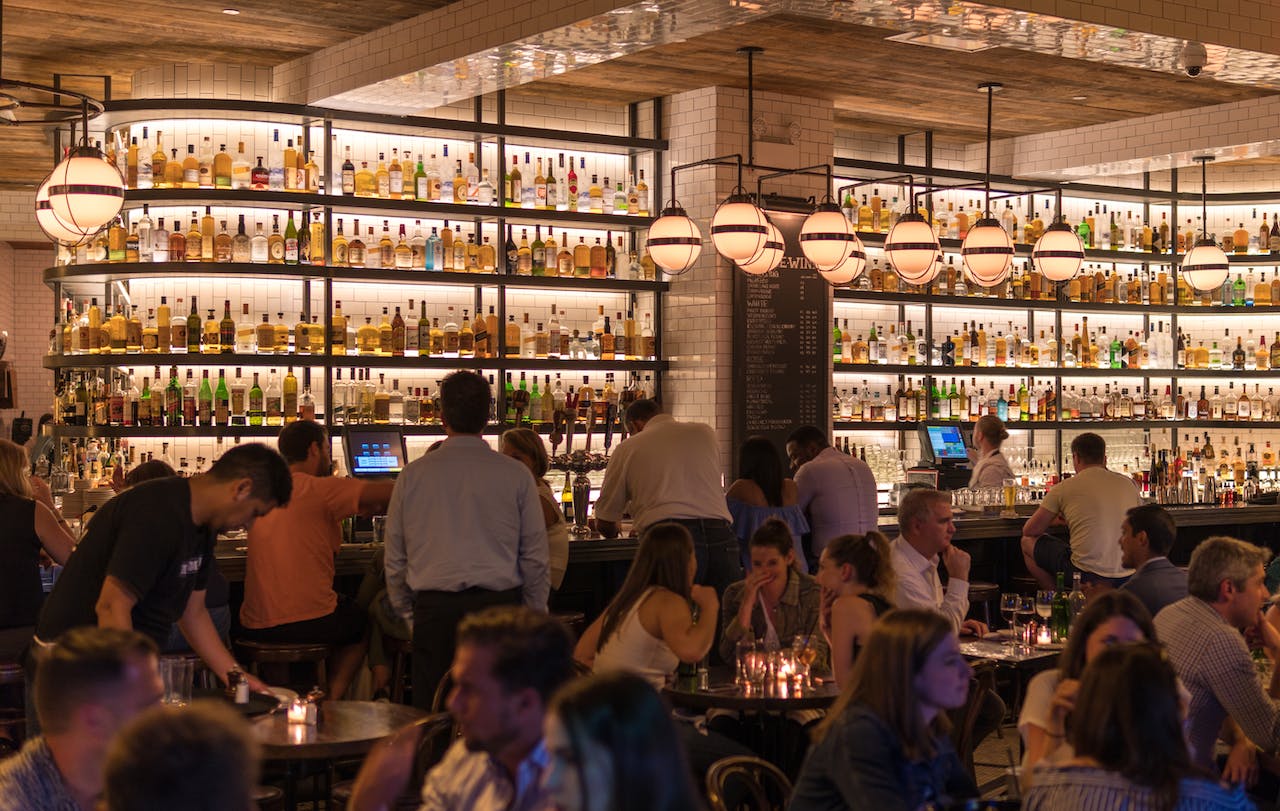
Conclusion: Cultivating a Brand that Resonates and Endures
It’s clear that the journey to creating and maintaining a strong brand is both challenging and rewarding.
For restaurant owners, branding is not just a facet of the business, it’s the heart and soul that connects your culinary passion with your patrons. It’s a story told across every dish served, every social media post, and every interaction within and beyond the walls of your restaurant.
Remember, a powerful brand can transform a simple meal into a memorable experience, turning first-time visitors into regulars.
Your brand is more than just a logo or a menu, it’s the embodiment of your vision, the essence of your culinary art, and the voice that speaks directly to your guests’ hearts.
As you move forward, keep in mind that branding is an ongoing journey, not a destination. The landscape of the restaurant industry is continuously evolving, and so should your brand.
Stay true to your core values but be adaptable to change.
Listen to your guests, engage with your community, and never stop telling your unique story.
Utilize these insights and strategies to refine and evolve your branding efforts, ensuring that your restaurant not only stands out in a crowded market but also leaves a lasting impression on every current and potential patron.
Discover Bloom Intelligence
Bloom Intelligence is an AI-powered restaurant marketing platform that includes a powerful customer data platform, automated data collection, automated WiFi marketing, and advanced reputation management tools.
Guest data is collected from multiple sources and aggregated into one single platform, making it simple and easy to analyze and segment your restaurant’s guests.
Bloom makes guest data collection effortless, allowing you to quickly execute the strategies listed above, saving you time, increasing customer lifetime values, attracting new guests, improving your reputation, and boosting your bottom line.
To see more of what Bloom can do for your restaurant, schedule a free demo today, or call us at 727-877-8181.
SAVE TIME, INCREASE CUSTOMER LIFETIME VALUES, CREATE NEW CUSTOMERS
What our happy customers
are saying
“SaaS that covered so many bases for us instead of having to use multiple software products. Bloom Intelligence has simplified our responses to reviews, customer feedback, and more. I highly recommend Bloom Intelligence.”
Robert Sanderson
“Bloom Intelligence really is a step ahead in terms of marketing software and metrics. Their product is reliable, fast and innovative and has helped the company I work for really grow.”
John Marchetti
“Working with Bloom Intelligence has been amazing. They assist you every step of the way and work with you hand in hand to make sure you are optimizing your advertising potential. We are excited to use this tool to help learn more about our customers so that we can personally engage with them and understand our strengths/weaknesses.”
Ariel Ramirez
“In these challenging times, it has been a pleasure working with Bloom Intelligence to help facilitate our service offering to our clients. They were extremely responsive and provided support to mitigate risk and minimize revenue loss. Great partner!”
Stefan Kim
“We’re extremely pleased with the wealth of customer data that we’re able to gather, at a very attractive price. In addition, we’re able to communicate our new product promotions by using the landing page as a digital billboard. A “no-brainer” for anyone working with limited Marketing $$.”
Bob Cross, Vice President of Operations
Restaurant Marketing FAQs
What is the best marketing strategy for restaurants?
Of all the restaurant marketing strategies, perhaps the most effective strategy is using a WiFi marketing and analytics platform. It allows you to collect customer contact information, segment your customer list, create targeted, personalized messaging, and remarket to them for maximum results.
What is restaurant remarketing?
Restaurant remarketing is a powerful way to connect with visitors to your website or customers who have logged into your WiFi. It allows you to send targeted advertising, and behavior-driven promotions to those people through online advertising or email marketing. It’s a key marketing concept that should be a primary focus of restaurant owners and marketers.
What is restaurant marketing segmentation?
Restaurant customer segmentation refers to the process of subdividing a customer base into specific groups based on similar demographics, psychographics, and/or various behavior data points. This information can guide restaurant marketing professionals when developing new marketing campaigns for each group or optimizing existing ones to personalize the customer experience online or at their physical locations.
How do you use smart coupons to market a restaurant?
The best and easiest way to implement and maintain a digital smart coupon program is to use a WiFi marketing and analytics platform like Bloom Intelligence. The platform allows you to easily create and send customers a unique, one-time-use code that they can redeem on their next visit. The coupon is stored on their mobile device.
The Power of Restaurant Marketing with Bloom

Optimize retail &
business operations

Track attribution of
customer campaigns

Trigger marketing
campaigns based on
marketing presence

Measure the health
of corporate & franchisee
locations

Compare locations or
group of locations to
quickly identify opportunities
or threats
Are you ready to grow
your restaurant business?
behavior and builds guest loyalty.
It’s time to start leveraging your guest WiFi to gain
a competitive edge. Then watch your profits grow.



